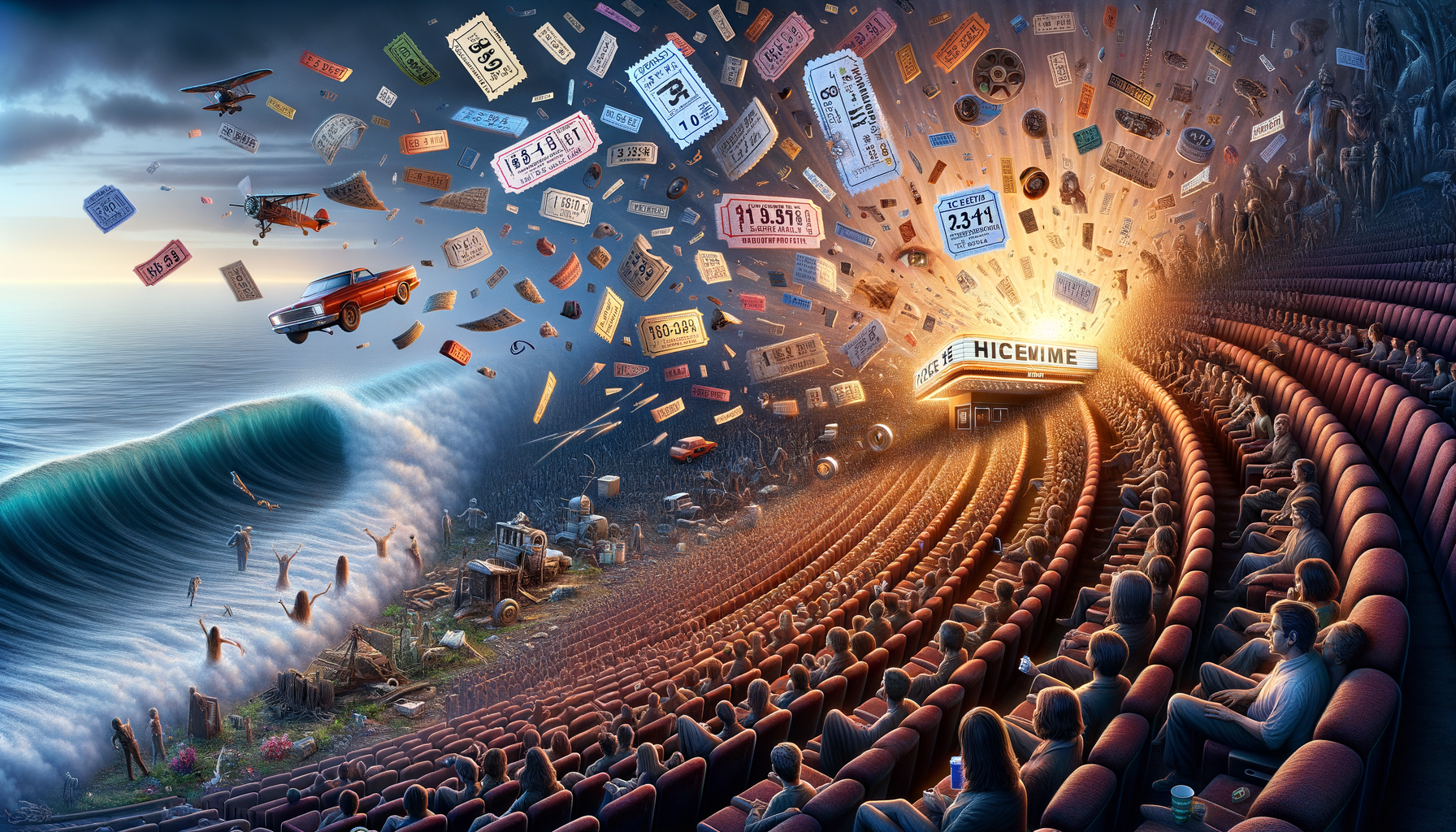The Evolution of Movie Tickets
Movie tickets have undergone a remarkable transformation since the first cinema halls opened their doors in the early 20th century. Initially, tickets were simple paper stubs, often hand-written or printed with basic information like the movie title and showtime. As the film industry grew, so did the sophistication of movie tickets. By the mid-1900s, tickets started to feature more detailed printing and branding, reflecting the increasing importance of movies in popular culture.
The digital age brought about significant changes in how movie tickets were issued and consumed. The introduction of online ticketing platforms in the late 1990s and early 2000s revolutionized the industry. Patrons could now purchase tickets from the comfort of their homes, avoiding long queues at the box office. E-tickets became a norm, allowing for seamless entry into theaters with just a scan of a QR code. This evolution not only improved convenience but also provided theaters with valuable data on customer preferences and behaviors.
Today, movie tickets are more than just a means of entry. They have become a part of the overall cinematic experience. Some theaters offer personalized tickets, complete with names and seat numbers, enhancing the sense of exclusivity and luxury. The evolution of movie tickets reflects broader technological and cultural shifts, highlighting the film industry’s adaptability in a rapidly changing world.
Pricing Strategies and Their Impact
Pricing strategies for movie tickets have a profound impact on both theaters and audiences. Traditionally, theaters adopted a flat-rate pricing model, where all seats were priced equally regardless of location or time of day. However, this approach often led to underutilization of premium seats and off-peak showtimes. To address this, theaters began experimenting with dynamic pricing models, similar to those used in the airline and hospitality industries.
Dynamic pricing allows theaters to adjust ticket prices based on demand, time, and seating preferences. For instance, tickets for weekend evening shows or blockbuster releases may be priced higher due to increased demand. Conversely, matinee shows or weekday screenings may offer discounted rates to attract more viewers. This strategy not only maximizes revenue but also encourages audience diversification by making movies more accessible during less popular times.
Another innovative approach is tiered pricing, where theaters offer different pricing levels based on seat location. Premium seats with better views might be priced higher, while seats closer to the screen are offered at a lower rate. This strategy caters to varying audience preferences and budgets, enhancing the overall movie-going experience.
While these pricing strategies have proven effective in increasing revenue, they also pose challenges. Some audiences may feel alienated by higher prices, leading to potential backlash. Therefore, theaters must strike a balance between profitability and inclusivity, ensuring that movie-going remains an accessible form of entertainment for all.
The Role of Movie Tickets in Audience Engagement
Movie tickets play a crucial role in engaging audiences and fostering a connection between viewers and the cinematic experience. Beyond their functional purpose, tickets serve as a tangible memento of the movie-going experience, often cherished by film enthusiasts as collectibles. Special edition tickets, featuring unique designs or commemorative artwork, can enhance this sentiment, turning a simple ticket into a keepsake.
Moreover, the purchasing process itself can be a form of engagement. The anticipation of securing tickets for a highly anticipated release adds to the excitement and builds a sense of community among fans. Online platforms and mobile apps have further amplified this by offering interactive features such as trailers, reviews, and seat selection, making the ticket-buying process an integral part of the overall movie experience.
Theaters also leverage movie tickets as a tool for audience engagement through loyalty programs and promotions. By offering discounts, free tickets, or exclusive screenings to frequent visitors, theaters encourage repeat business and foster a sense of loyalty among patrons. These programs not only enhance customer satisfaction but also provide valuable insights into consumer behavior, allowing theaters to tailor their offerings to better meet audience needs.
In conclusion, movie tickets are more than just a gateway to the latest blockbuster; they are a vital component of the movie-going experience, influencing how audiences engage with films and theaters. As the industry continues to evolve, the role of movie tickets in shaping audience interactions and experiences will undoubtedly remain significant.
Technological Innovations in Ticketing
The technological advancements in ticketing have significantly enhanced the efficiency and convenience of purchasing movie tickets. With the rise of smartphones and mobile applications, the process has become more streamlined and user-friendly. Mobile ticketing apps allow users to browse showtimes, select seats, and purchase tickets with just a few taps. This ease of access has contributed to a rise in spontaneous movie outings, as audiences can quickly secure tickets without prior planning.
In addition to mobile apps, theaters have embraced contactless payment options, further simplifying the ticketing process. This innovation not only speeds up transactions but also enhances the safety and hygiene of the purchase experience, a crucial factor in the post-pandemic world. Contactless ticketing has become a preferred method for many, reducing physical contact and minimizing the risk of disease transmission.
Another notable technological advancement is the integration of artificial intelligence (AI) in ticketing systems. AI algorithms analyze data such as viewing history, preferences, and demographics to provide personalized recommendations and offers to users. This personalized approach not only increases the likelihood of ticket purchases but also enhances customer satisfaction by aligning offerings with individual preferences.
As technology continues to advance, the future of movie ticketing looks promising. The integration of virtual reality (VR) and augmented reality (AR) in the ticketing process could offer immersive previews of theater environments and seat views, allowing customers to make more informed decisions. These innovations are set to redefine the ticketing landscape, making the process more engaging and tailored to the needs of modern audiences.
Conclusion: The Future of Movie Tickets
As we look to the future, the evolution of movie tickets will continue to play a vital role in the film industry. The ongoing advancements in technology, coupled with innovative pricing strategies, will shape how audiences interact with theaters and films. Movie tickets will remain a key touchpoint in the cinematic journey, influencing audience engagement and satisfaction.
The challenge for theaters will be to balance technological innovation with the timeless appeal of the movie-going experience. By embracing new technologies while preserving the essence of cinema, theaters can ensure that movie tickets continue to serve as a bridge between audiences and the magical world of film.
Ultimately, the future of movie tickets lies in their ability to adapt to changing consumer preferences and technological advancements. As the industry evolves, movie tickets will undoubtedly remain an integral part of the cinematic experience, enriching how audiences connect with films and theaters.



Leave a Reply